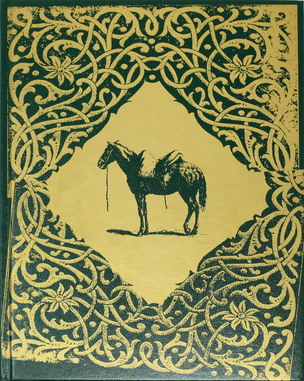Drawing on research for the first major study of perhaps the key work achieved during the formative years of conceptual art, “Joseph Kosuth’s The Second Investigation in Vancouver: Art on TV” examines one key strand of innovation in the important but little-discussed The Second Investigation (1969–72) introduced by Kosuth’s exhibition at the Douglas Gallery in Vancouver in the fall of 1969, Joseph Kosuth—October 1969.
The contents of the exhibition consisted, first, of a gallery exhibition comprising the fifteen functionally descriptive card labels standing in for the same number of galleries and locations in Argentina, Australia, Belgium, Canada, England, Holland, Italy, Switzerland, and the US, where the labels were also shown. The second component of the exhibition was an attempt to “program” the work on Canadian public television. Using entry “VII. Color” from “Class Three: Physics” in the Roget’s Thesaurus “Synopsis of Categories,” Kosuth offered a commentary on the constitution of the colour spectrum in the form of a conceptual art palette rendered through the black and white of typewritten text. But the Vancouver/Douglas piece, like others in The Second Investigation, Welchman argues, carries with it a subtext that relates to its context. In this case covert reference was made not to the physical location (city or gallery and their associated semantic fields) but to the medium in which the piece appeared: TV itself.
This Supplement explores Kosuth’s unique adjudication of the relation between art and TV—conceived as a physical object or broadcast medium, as entertainment or information, as public service or licensed commercial business—at the end of the 1960s.












![Protect Me From What I Want Wooden Postcard [Gold Text]](https://d23eqwv5slm408.cloudfront.net/api/file/1rE09CiPQpGMa3jDySHP/convert?fit=max&h=480&w=304&compress=true&fit=max)
![Words Tend To Be Inadequate Wooden Postcard [Gold Text]](https://d23eqwv5slm408.cloudfront.net/api/file/HhtS8vASTpWSUA41En0s/convert?fit=max&h=480&w=304&compress=true&fit=max)

![All Things are Delicately Interconnected Wooden Postcard [Gold Text]](https://d23eqwv5slm408.cloudfront.net/api/file/muHR6MdRL6EgJe6ATC1m/convert?fit=max&h=480&w=304&compress=true&fit=max)

![Protect Me From What I Want Wooden Postcard [Red Text]](https://d23eqwv5slm408.cloudfront.net/api/file/xKZZfpWNQRChHZkrFntw/convert?fit=max&h=480&w=304&compress=true&fit=max)
![All Things Are Delicately Interconnected Wooden Postcard [Red Text]](https://d23eqwv5slm408.cloudfront.net/api/file/C6N6ppL6SnKYeXJuCtbd/convert?fit=max&h=480&w=304&compress=true&fit=max)







![In a Dream You Saw a Way to Survive and You Were Full of Joy Wooden Postcard [Black Text]](https://d23eqwv5slm408.cloudfront.net/api/file/WEd4Y05lROcLsySIoRfJ/convert?fit=max&h=480&w=304&compress=true&fit=max)
![Raise Boys and Girls the Same Way Wooden Postcard [Red Text]](https://d23eqwv5slm408.cloudfront.net/api/file/uV8m1BsaQ6OCflSE578g/convert?fit=max&h=480&w=304&compress=true&fit=max)
![Money Creates Taste Wooden Postcard [Black Text]](https://d23eqwv5slm408.cloudfront.net/api/file/FDyWtNrERsKaawMR4dY8/convert?fit=max&h=480&w=304&compress=true&fit=max)
![The Breakdown Comes When You Stop Controlling Yourself and Want the Release of a Bloodbath Wooden Postcard [Black Text]](https://d23eqwv5slm408.cloudfront.net/api/file/Yq72qCUcTzenjZPmDHHH/convert?fit=max&h=480&w=304&compress=true&fit=max)

![Expiring for Love is Beautiful But Stupid Wooden Postcard [Red Text]](https://d23eqwv5slm408.cloudfront.net/api/file/PT3j9ljKSpS25IO8wycY/convert?fit=max&h=480&w=304&compress=true&fit=max)
![You Are Guileless In Your Dreams Wooden Postcard [Red Text]](https://d23eqwv5slm408.cloudfront.net/api/file/ZK3xDij0TaSAYgCc33sM/convert?fit=max&h=480&w=304&compress=true&fit=max)


![Money Can Buy You Love [Postcard]](https://d23eqwv5slm408.cloudfront.net/api/file/xZZhOmzTJiMu3SC7vLlT/convert?fit=max&h=480&w=304&compress=true&fit=max)


![To Buy Or Not To Buy [Postcard]](https://d23eqwv5slm408.cloudfront.net/api/file/OHBW6G4RGKh49ott8liS/convert?fit=max&h=480&w=304&compress=true&fit=max)

![Private Property Created Crime Wooden Postcard [Black Text]](https://d23eqwv5slm408.cloudfront.net/api/file/KI5UbFcfScGfPtZgAdYY/convert?fit=max&h=480&w=304&compress=true&fit=max)
![Untitled Film Still #21, 1978 [Postcard]](https://d23eqwv5slm408.cloudfront.net/api/file/aPsUudHwRDWz2SwOpwRg/convert?fit=max&h=480&w=304&compress=true&fit=max)
![Untitled [Business as usual] Tote Bag](https://d23eqwv5slm408.cloudfront.net/api/file/5dklHZepSsuX52IdaAV6/convert?fit=max&h=480&w=304&compress=true&fit=max)
















![2025 Slingshot Spiral Desk Organizer [Large]](https://d23eqwv5slm408.cloudfront.net/api/file/ZgnUiIyGQvCJckBO913B/convert?fit=max&h=480&w=304&compress=true&fit=max)
![2025 Slingshot Spiral Organizer [Small]](https://d23eqwv5slm408.cloudfront.net/api/file/KZ7ZLJgxSUOwmKWv37hA/convert?fit=max&h=480&w=304&compress=true&fit=max)







![Blue Moon Ari Marcopoulos T-Shirt [X-LARGE]](https://d23eqwv5slm408.cloudfront.net/api/file/uSvA0LwzRlC8ZekANYmI/convert?fit=max&h=480&w=304&compress=true&fit=max)
![Blue Moon Ari Marcopoulos T-Shirt [LARGE]](https://d23eqwv5slm408.cloudfront.net/api/file/RVRQRVnRQtujs9DmAyCs/convert?fit=max&h=480&w=304&compress=true&fit=max)
![Blue Moon Ari Marcopoulos T-Shirt [MEDIUM]](https://d23eqwv5slm408.cloudfront.net/api/file/v9V1Mlb3RfSvN9glBNMt/convert?fit=max&h=480&w=304&compress=true&fit=max)
![Blue Moon Ari Marcopoulos T-Shirt [SMALL]](https://d23eqwv5slm408.cloudfront.net/api/file/qtNAgHVcRaqHCzkAx5B2/convert?fit=max&h=480&w=304&compress=true&fit=max)
![2025 Slingshot Organizer [Pocket Classic]](https://d23eqwv5slm408.cloudfront.net/api/file/TvyPY1HQySS4aIlgwaK2/convert?fit=max&h=480&w=304&compress=true&fit=max)
